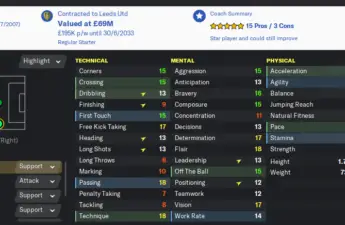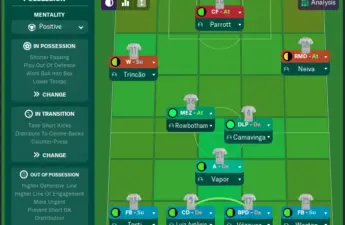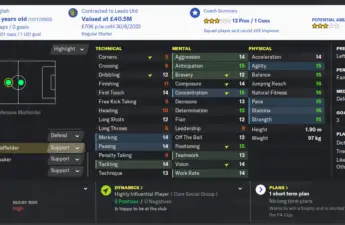The Half Back and the Anchor Man are among the roles which only a few FM managers effectively use. This is because both these roles significantly change how you should structure your backline.
Both the Half Back and the Anchor Man are only found in the defensive midfield strata of football manager, however, they have more in common with central defenders than other defensive midfield roles like the Deep Lying Playmaker, the Segundo Volante, or even the Ball Winning Midfielder.
In this article, I will be taking a look at both of these roles, and show you how you can effectively incorporate them into your next system.
The Half Back In Football Manager
Football manager describes the Half Back as a player who serves a role somewhere between that of an aggressive sweeper and a defensive midfielder.
The Half Back will drop deeper than a standard defensive midfielder in possession and look to offer an outlet for quickly recycling possession and protection against the counterattack.
In the modern game, Fabinho is one of the few players I can think of, who plays the closest to how football manager describes the Half Back role.
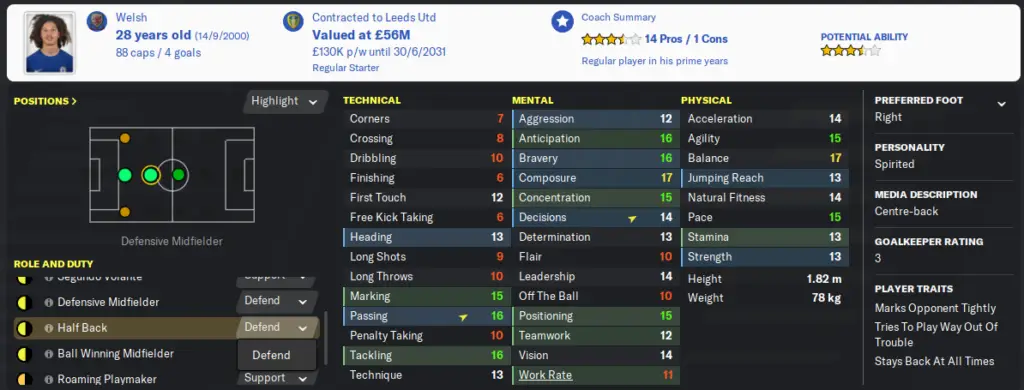
Often playing at the base of a midfield three, Fabinho drops deep when the wing backs, Trent Alexander Arnold, and Robertson join the attack on the overlap.
Fabinho will rarely venture away from his position to roam to a different area of the pitch. However, due to how Liverpool are dominant in some games, Fabinho will occasionally push forward past the halfway line to add another body in the final third from where he can take part in quickly shifting the opposition from one side of the pitch to the other as they try to find the space to get through on goal.
Just as Liverpool go about their business, the Half Back in football manager is best paired with wing backs who are willing to be adventurous when the team is in possession.
When they leave their positions and bomb forward, the Half Back will then offer protection to the two central defenders, who will move slightly wide to create room for the Half Back to occupy in between them.
As the central defenders move slightly to the side, they will form a sort of makeshift three-man defence, which is more defensively sound than leaving the two central defenders on their own.
When the team losses possession, the Half Back, Wing Backs, and the Central Defenders will then go back to their normal positions, restoring the team’s shape.
Now since the Half Back works well with attacking wing backs, and attacking wing backs excel in narrow formations, the Half Back role tends to be used by most FM managers in narrow tactics that rely on the wing backs to provide the width while the two strikers and an attacking midfielder, preferably a shadow striker, are tasked with providing the goals for the team.
To have a stronger presence in the wider areas of central midfield, you can deploy a Carrilero and a Mezzala just in front of the Half Back in the CM strata.
Attributes that are crucial for the Half Back role are positioning, marking, concentration, and tackling. This is to ensure the Half Back is at the right place to intercept long balls or to wrestle the ball away from the opponent.
Passing, technique, and a few other attributes more suited to creative midfielders like the advanced playmaker and the regista are not crucial to a Half Back, however, they can aid him to keep the ball better.
The Anchor Man In Football Manager
The Anchor Man also called the water carrier is defined by football manager as a player whose main duty is to sit in the hole between the defence and the midfield, intercepting moves, winning the ball back, and laying off simple passes to his more creative teammates.
Despite having very similar definitions, the main difference between the Anchor Man and the ball winning midfielder is that the Anchor Man is a lot more disciplined and won’t close down the opposition until the ball comes into his zone.
By sitting just in front of the defence, which also helps take away the pressure from the central defenders, the team is able to better maintain its shape in defensive situations.
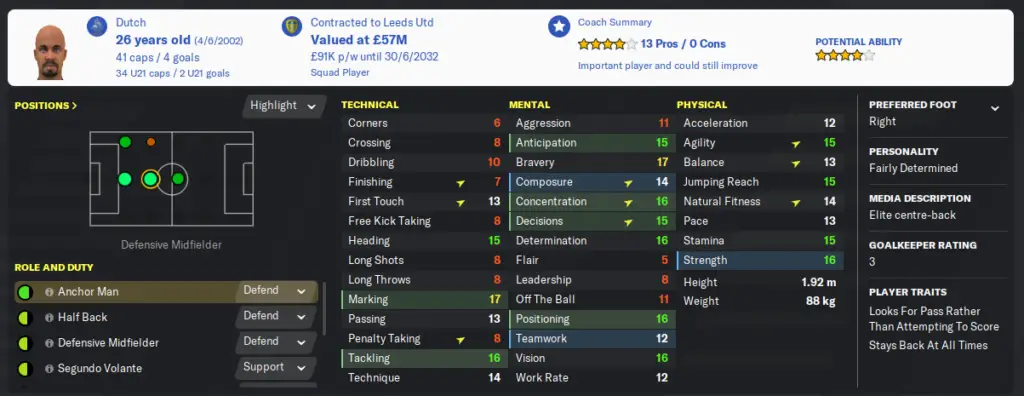
Nemanja Matic in his earlier years at Chelsea and Manchester United was an example of the perfect Anchor Man. At United, he would sit at the base of the midfield three consisting of Herrera and Pogba.
With Antonio Valencia and Ashley Young overlapping in the fullback positions, combined with Pogba always joining the attack, the onus was on Matic to ensure the central defenders have a shield in front of them that will stop most threats before they get to De Gea in goal.
Unlike the Half Back that we have discussed above, the Anchor Man will not drop back to be in the same line as the central defenders. He will instead take a position just in front of them.
In terms of tactical set up, the Anchor Man in my opinion does not provide the freedom to the wing backs to be attacking as they can be.
Therefore, be cautious in the type of roles you assign them, as complete wing backs might lead to your team getting exposed more easily as the centre backs are not wired to move to the side to mind the spaces that your complete wing backs will ultimately leave when they join the attack.
Attributes that are crucial to the Anchor Man role are concentration, positioning, marking, and tackling. Most attributes that are relevant to central defenders will also apply here, as the Anchor Man is basically doing their job, but from the defensive midfield position.
In addition to the Half Back and the Anchor Man, you can also take a look at the Libero here who occupies the central defender position, but his movement mirrors that of a creative defensive midfielder.
